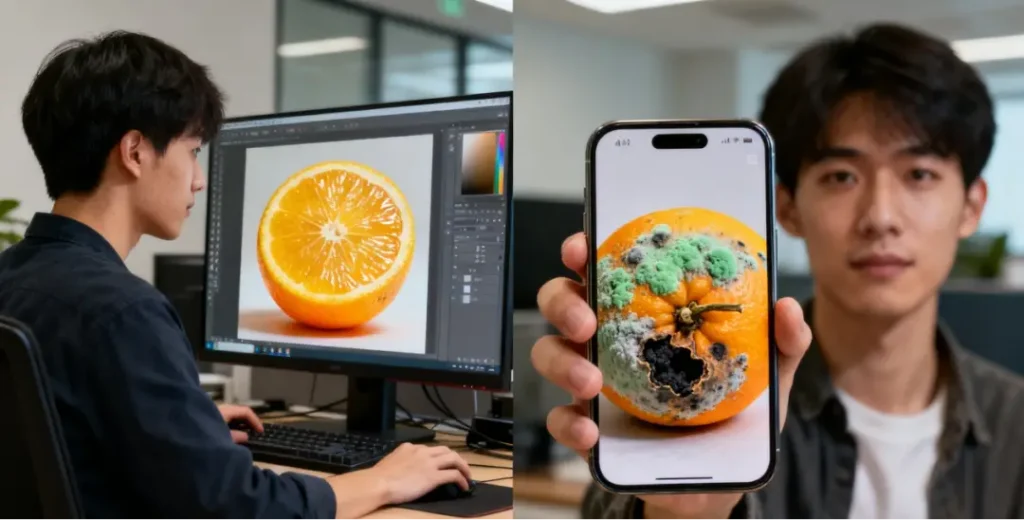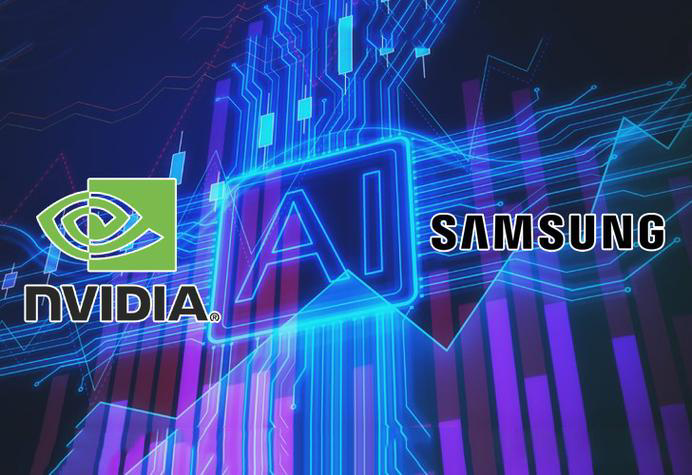
Double Eleven is in full swing, but AI fake images have become the biggest “enemy” for both buyers and sellers.
Recently, on social media platforms such as Weibo, many bloggers shared a netizen’s experience of only refunding: using AI tools to make the purchased goji berries look moldy, sending photos to the merchant, and successfully applying for only a refund. The Weibo quickly sparked controversy, and many netizens @ official accounts of e-commerce platforms expressed caution against new forms of fraud.
In fact, this is not an isolated case.
From stains on clothes, to damaged books, to the decay of fresh produce… many e-commerce sellers have received similar AI fake images just to apply for non return, only refund, and some even forgot to cut off the AI watermark. ”Even if some sellers request to take videos for verification, some consumers will still send AI made videos. All of these have caused great distress to many e-commerce customer service representatives and merchants.
On the other hand, consumers are also dissatisfied with e-commerce merchants using AI images as product images, especially when product detail images use fake backgrounds, models, and products, and even mass fabricate “buyer shows”, which can be difficult to prevent and can easily lead to pitfalls.
The ‘bean buns’ have become magical tools for refunds
I really didn’t expect this kind of operation. “Ning Ke, born in the 1990s, opened an online store on an e-commerce platform this year, mainly engaged in wholesale of green plant seedlings. Recently, an old customer in the store applied for a refund. In the pictures sent, there are many wormholes of different sizes on the leaves of the seedlings. At first glance, Ning Ke immediately apologized to the other party and asked, “How many are like this?” But upon closer inspection, she realized something was wrong. “There is still a watermark in the lower right corner: generated by Doubao AI. ”
Ning Ke couldn’t help but laugh and cry for a moment. “It’s too extreme and too thoughtful, just for less than ten yuan, why bother?” When she pointed out this “trick” to the other party, they withdrew their refund request.
Ning Ke’s experience is becoming a dilemma for many e-commerce merchants.
On social platforms such as Weibo and Xiaohongshu, many e-commerce customer services or businesses have roast about AI fake images they have received. Some have obvious stains on their hats, some have AI generated damaged packaging, and some have AI generated cracks on shoes or clothing… However, many AI fake images have obvious AI traces, such as garbled text on the packaging or cracks in different locations in a set of photos. But there are also many pictures that have deceived the platform, and merchants have to compensate or agree to only refund.
Among them, a merchant selling beauty products posted a note on Xiaohongshu stating that they had “discovered an AI fake image for refund”. According to the screenshot of the conversation they posted, the consumer sent her a picture of themselves experiencing facial allergies after using the product, showing a large area of red rashes on their face. But when the merchant requested a video chat to confirm the situation, the other party hung up the video chat and said ‘no more’. Later, the merchant pointed out, ‘This is clearly an AI fake image, suspected of fraud.’. ”The other party apologized and said, “I didn’t mean to
In addition, when consumers request a refund only due to product defects, many merchants will require consumers to cut the product and discard it, and take pictures or videos. This has also become an opportunity for consumers to use AI fake images.
A blogger once posted on Weibo that “many buyers have started using AI to create fake images to deceive them, claiming that they have already destroyed the socks, but in fact, the socks are still in good condition and can be white and refunded. ”And in the pictures it released, there are pictures of damaged socks made by the buyer’s AI, as well as pictures of socks becoming two pieces.
Another blogger shared a video. When the merchant asked the consumer to provide a video of the destruction of goods, the video sent by the other party said, “Obviously, he was throwing the goods into the garbage can with his right hand, and then suddenly an identical right hand appeared, throwing the goods together. The whole video has a strong AI flavor. ”
In recent years, the refund only rule has caused dissatisfaction among e-commerce merchants. In November last year, the State Administration for Market Regulation also interviewed six online shopping platforms, pointing out that “refund only” squeezed the survival space of merchants and demanded rectification. In August of this year, the State Administration for Market Regulation once again publicly stated that it will urge online trading platforms to cancel unreasonable restrictions such as refund only and mandatory freight insurance. But now, when AI generated software becomes a “miracle tool” for refunds only, the situation faced by merchants is obviously even more difficult.
Merchants also use AI fake images, focusing on “wrong version of goods”
However, it is not just some consumers who use AI fake images to exploit loopholes. Many businesses are also using AI fake images as product detail images, and even mass forging AI buyer shows.
Not long ago, the well-known snack brand Liangpinpuzi took promotional pictures for “Four Red Peanuts” and even hung the peanuts growing in the ground on tree branches, causing a big joke. Liangpinpuzi responded by stating that it was caused by the incorrect use of AI generated image materials on the product detail page of the e-commerce platform.
If this type of AI fake image only makes consumers laugh it off, some businesses use AI fake images that make consumers unable to laugh after receiving the goods.
For example, plush toys, on social media platforms such as Xiaohongshu, have many consumers’ pitfalls. Some netizens mentioned that when they were purchasing a plush toy pendant, “the product image looked incredibly beautiful, but when they received it and compared it, it was a world of difference.” They also asked, “Can we report AI product images? ”Another netizen also posted notes saying that a cat plush toy pendant worth 60-70 yuan was not only pre-sale, but also waited for almost two months before being shipped. After receiving the package, they found that the actual product was too abstract. “When I bought it, I didn’t realize it was AI, so I just thought it was a rendering
For example, in the clothing industry, many businesses not only use AI to generate product images, but also start generating fake model images, “without details, with only one color and single angle, and color cutting that deviates from the actual product.” There are also many businesses that use photos of celebrities or bloggers to replace their faces with model images. This makes consumers hesitate and say, ‘I won’t buy any stores that use AI graphics.’. The probability of incorrect version of the goods is 99.9%. ”In the comment section of these stores, you can often see many AI generated buyer shows: the same type of “model”, similar styling styles, and some even show obvious AI traces such as finger deformation.
In addition, many fresh food stores are also using AI product images on a large scale. According to Qilu Evening News, three e-commerce platforms selling “Jiangsu Cream Crispy White Peach”, “Shandong Mengyin Big White Haired Peach”, and “Shaanxi Crispy Sweet White Peach” used the same set of AI generated peach images – the peaches in the pictures are completely white, hairless, and round in shape, which does not match the actual shape of hairy peaches.
In fact, the “Artificial Intelligence Generated Composite Content Identification Method” jointly issued by the Cyberspace Administration of China and four other departments has been officially implemented. The ‘Identification Method’ specifies that all AI generated text, images, videos, and other content must ‘identify themselves’. As early as March this year, Taotian Group announced its intention to “combat AI fake images and protect the rights and interests of consumers and original merchants”. The announcement states that “product images should be based on actual product photos as the core effect, and the decoration behavior should be moderate to avoid distortion. It is strictly prohibited to use AI and other technology synthesis methods to present significantly distorted product information effect images that do not match reality. ”
However, there are still many merchants using AI fake images on major e-commerce platforms. Perhaps establishing clearer platform mechanisms and identification labels can strengthen the constraint on merchants.
Of course, whether it’s the “seller show” created by sellers using AI or the “evidence” concocted by buyers for refunds, they all ultimately point to the same outcome – a crisis of trust between buyers and sellers. There is no right or wrong in technology, but when AI becomes a tool for opportunism, it obviously requires clearer regulatory constraints, stricter platform review mechanisms, and more mature content identification technology to work together.















暂无评论内容